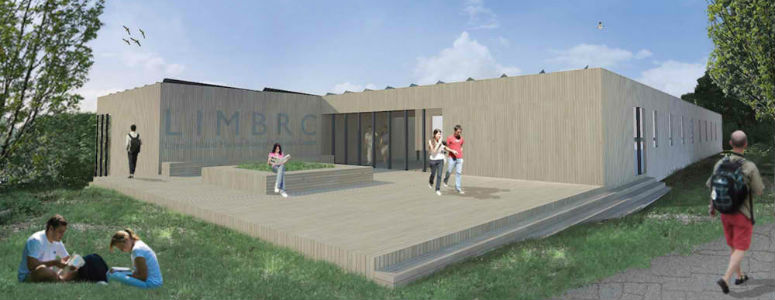A marine biology research center, a forest learning center and an arboretum are among the three winning designs in the 2013 Sustainable Versatility Design Awards, which re-imagine the use of Eastern White Pine in the modern classroom. Each proposal puts this eco-friendly building material to optimal use in campus buildings, in ways that highlight the aesthetic, functional and sustainable qualities of the wood. Sponsored by the Northeastern Lumber Manufacturers Association, the awards are a vivid illustration of how Eastern White Pine will continue to thrive in thoughtfully designed structures of the future.
Coming in third place is The Arnold Arboretum at Harvard University by Nicholas Guertin of Northeastern University. This proposal offers a warm and welcoming space for hands-on botanical and horticultural education in one of the last and largest pieces of Frederick Law Olmstead’s Emerald Necklace.
In second place is ‘Finding the Trees in the Woods: Rediscovering the Forest’ by Christopher Telomen of the University of Hawaii. An outdoor learning center serving as a home base for exploring the wilderness, this structure is located in an Eastern White Pine conservation area and takes its inspiration from the natural forms of the trees.
The first place winner is The Lovells Island Marine Biology Research Center by Ben Greer of Northeastern University. Proposing a new on-site learning center on Lovells Island in Boston’s outer harbor, this project is a 6,593-square-foot facility with two research labs and the capacity to house up to 30 people directly on-location.
Greer came up with his vision in just two weeks, prior to the start of the spring semester. He explains that he wanted to bring the educational experience directly to the source, by providing students with the benefits of on-site learning.
“I spent a large portion of my childhood in Boston Harbor on my grandfather’s fishing boat, so I am not only captivated by the area, but I am more than familiar with the geography. I wanted to couple Boston’s thriving and enormous educational sector with raw and undeveloped nature of the harbor islands. The design became focused on providing the 250,000 college students in the city with a research center that wasn’t just another lab on campus; it was a scientific retreat away from the chaotic atmosphere of the city and conveniently located atop and around the field of study. This first hand learning allows for students and researchers to focus solely on their field by eliminating the majority of day to day distractions.”
“I am happy with the way the design turned out for being done on such a short schedule. It was great to have the opportunity to present the project to the members of NELMA, and perhaps one day, a project like it could be realized in the harbor.”







